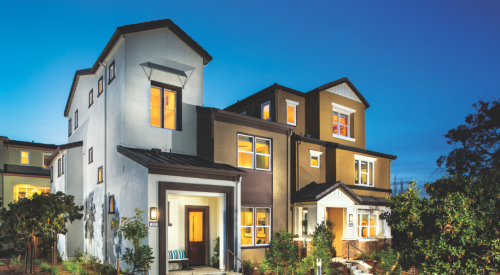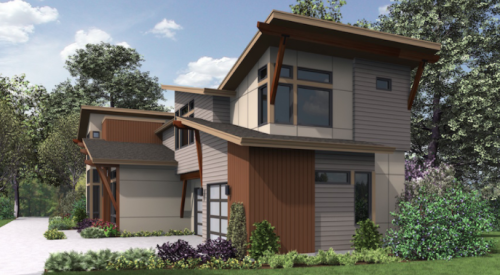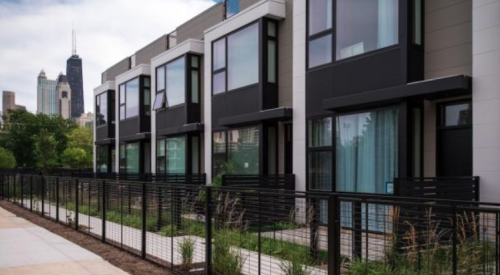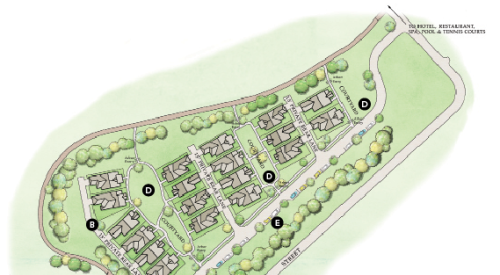| A four-units-to-the-acre plan for a circular subdivision can accommodate a four-building, 16-unit multifamily solution, says proponent Robert Showen.
|
A California lawyer has received a patent for his solution to the problem of tight, confined suburban neighborhoods: acre-sized circles that maximize the side and front-facing distances between homes.
Under the plan devised by Robert Showen, a Stanford University-trained engineer turned lawyer from Walnut Creek, Calif., distances between homes facing each other are 140 feet with a screen of vegetation on a street island in between. Rear distances are 50 feet. And street frontage is 125 feet for a 5,000-square-foot lot.
"I took a trip down to Southern California and Phoenix, and the gripe I heard most often from suburban homeowners was that they could reach out and touch their neighbor’s home," says Showen, who develops real estate on the side. "There is a subdivision on the coast where the houses are going for in excess of $1 million, yet they have 5- and 6-foot side-yard setbacks. This arrangement solves that problem."
The circular subdivision also slows vehicular traffic through a neighborhood, says Showen. All streets are curved, forcing drivers to keep speeds low. The street pattern was the most difficult aspect to design, says Showen, who settled on narrow, one-way streets with an 8-foot parking lane and a 12-foot driving lane.












